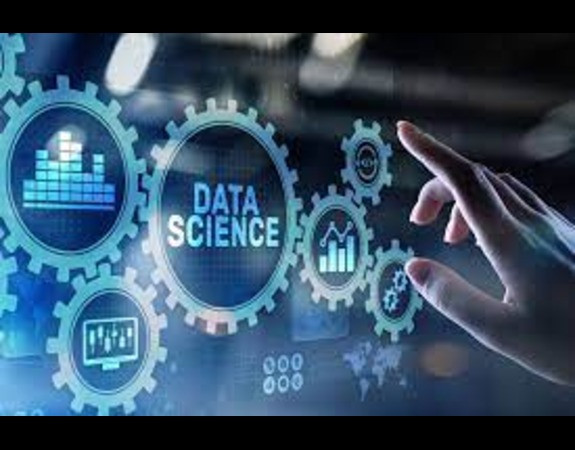

Data Science
By the end of a data science course, you'll be equipped with a
powerful set of skills and knowledge to analyze data, solve problems. This can
open doors to various exciting careers in fields like data analyst, data
scientist, machine learning engineer, and business intelligence specialist.Data
Manipulation and Analysis: Learning how to collect, clean, and preprocess data,
as well as techniques for exploratory data analysis to understand the
characteristics and patterns within the data.Learning how to effectively
visualize data using tools and libraries, and how to create informative and
insightful visual representations of data.Programming Languages and Tools:
Gaining proficiency in programming languages commonly used in data science,
such as Python or R, as well as familiarity with data science libraries and
tools like pandas, NumPy, scikit-learn, and more.Big Data and Distributed Computing:
Understanding the principles of big data processing, distributed computing
frameworks like Hadoop and Spark, and techniques for working with large-scale
datasets.Data Mining and Text Analysis: Exploring techniques for extracting
patterns and insights from large datasets, including text mining, sentiment
analysis, and natural language processing.
Section1: Kick-Starting Python
·
Introduction of Python Language.
·
Distribution of Python Software.
Section2: Python in real-time industry
·
Taste of online IDEs
Section3: Python Language Fundamentals
·
Tokens & Syntax.
·
Numbers & variables.
·
Simple Input and Output.
·
Bare bones of the program
Section4: Data Handling
·
Python Collections
·
Data types.
·
Sorting
Section5: Control flow in Python coding
·
Conditional Decision-making statements.
·
Looping Statements
Section6: Errors and Exceptions
·
Errors & Termination.
·
Exception Handling.
Section7: Working with Functions, Libraries & Modules
·
Built-in/User-defined Functions.
·
Recursive & lambda Functions.
·
Libraries and Python Modules
Section8: File handling in Python
·
Way around Data files
Section9: OOPs in Python
·
Python Class & Objects.
·
Encapsulation, Abstraction, Polymorphism, and Inheritance.
Section10: Database communication
·
Database Access
Section11: Miscellaneous topics
·
Other Remaining
topics
Advance Python Course is Project Included
Section12: Introduction to Python Pro(TAMING THE DATA)
·
Understanding Data.
·
Playing with data.
·
Introduction to Python based ML/DL and Data analytics.
Section13: Role of Statistics in Data Science
·
Intro to statistics, Central tendency, standard deviation, variance
·
Inferential Statistics, Types of Probability
Distribution
Section14: Data Science 101
·
House warming to Arrays.
·
Analysis and Manipulation of data.
·
Working with plots and charts
·
Hands on practice
·
Exploratory Data Analysis
Section15: Diving Deep in to Science of ML
·
Introduction to ML
•
Programming with Python
•
NumPy with Python
• Learning Pandas for Data Analysis
•
Understanding of Matplotl ib Programming Library-
• Glanceat seaborn for data visualizations
·
Understanding Machine Learning with SciKit Learn
·
Different types of ML:
• Supervised Machine Learning
•
Classification
• Random Forest Algorithm
• Decision Tree Algorithm
• Naive Bayes
• Logistic Regression Algorithm
• K-Nearest Neighbor
• Natural Language Processing
• Support Vector Machine Algorithm
•
Regression
• Simple Linear Regression Algorithm
• Lasso Regression
• Ridge Regression
• Multivariate Regression Algorithm
• Decision Tree Algorithm
• Lasso Regression
• Unsupervised Machine Learning
• Clustering
• K-Means Clustering algorithm
• Hierarchal clustering
• Mean-shift algorithm
•
DBSCAN Algorithm
• Principal Component Analysis
• Independent Component Analysis
•
Association
•
Some popular algorithms of Association rule learning are
Apriori Algorithm, Eclat, FP-growth algorithm
• Semi-Supervised Machine Learning
• Reinforcement Learning
·
Model Deployment
·
Live
Industrial & ResearchProjects on various ML Algorithms
DEEP LEARNING{Advanced Coding 2.0
for Data Science Learning Professional}
Section16
·Introduction to DL
·Machine Learning and Neurons
•
Machine Learning
•
Neuro
•
Model Learning
•
Making Predictions
•
Saving and Loading Model
•
Introduction to Keras
·Feed forward Artificial Neural Network
•
Artificial Neural Networks
•
Forward Propagation
•
Activation Function
•
Multiclass Classification
•
Working with images
•
NN for Classification
•
NN for regression
·Convolution Neural Networks
•
Convolution
•
CNN Introduction
•
Working with examples using CNN
·Recurrent Neural Networks
•
Sequence Data
•
Forecasting
•
Time Series Prediction
•
RNN introduction
•
RNN on Time Series
•
RNN for Image classification
•
Intro to LSTM
·Working on Recommender system
·Project-Transfer Learning
·Generative Adversarial Networks
•
GAN introduction
•
Creating GAN
·Working with Tensor flow
·Loss Function in deep learning
· Deployment
•
Create a model
•
Model Prediction function
•
Running with basic flask application
· Live
Industrial & Research Projects on various DL Algorithm

0 Reviews
Laudantium iure aut
